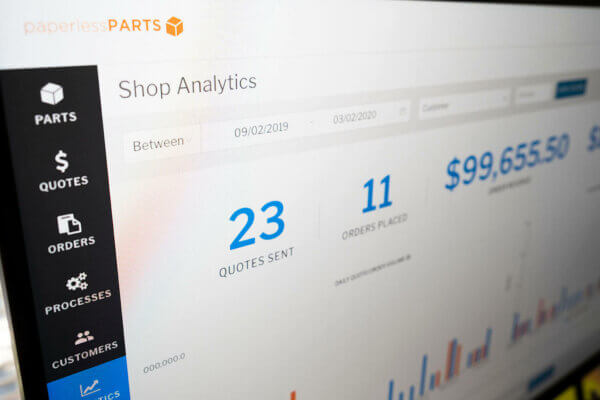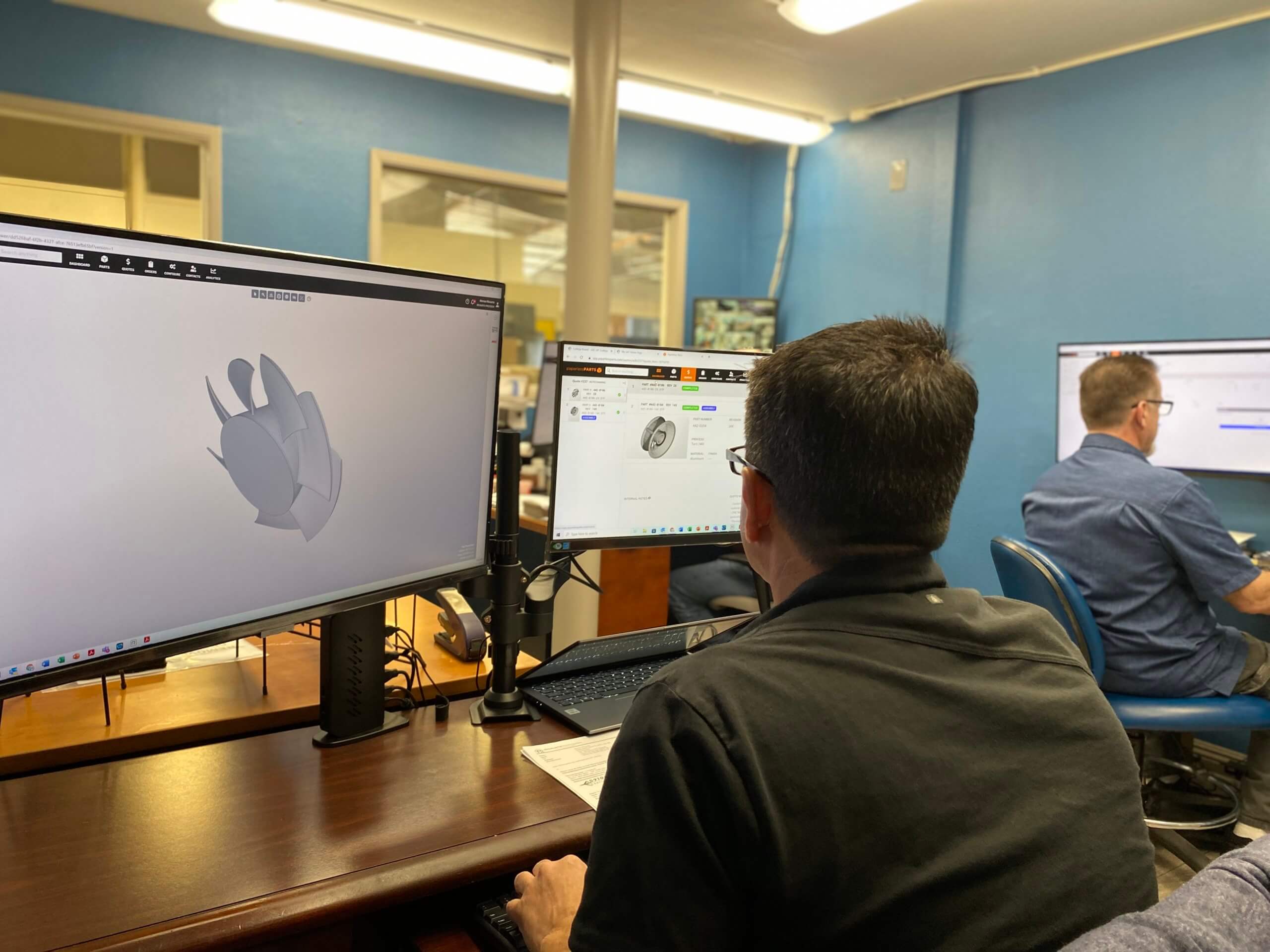
Machine Shop Estimating & Quoting: A Complete Guide
Estimating for machine shops can be a time-consuming process, and quoting comes with a whole new set of expectations these days. With part buyer expectations trending towards valuing speed and user experience over price, what are some best practices to implement at your machine shop to make sure you’re estimating and quoting with your win rate in mind? Read on for our complete guide to machine shop estimating and quoting.
Machine Shop Estimating: A Complete, 5-Step Guide
Step 1: Centralize Your Quotes
Centralize and standardize the states of all your RFQs: current status, missing information, in need of review, and acceptance.
Handling hundreds of quotes can create chaos. Still, some job shops manually track quotes in spreadsheets, and within any shop, there may be numerous people handling RFQs, each with a different system for going about it. When the front end of the quoting process consumes more time, there’s less time left to quote the job (let alone manufacture a product). Misplaced quotes lead to missed deadlines, lost revenue, and likely disappointed customers.
Centralized quote management, including the RFQ stage, is the cornerstone of efficient quoting. A centralized system allows you and your team to readily access all of your quotes. This means everyone knows where to go – no more wasting time searching through spreadsheets to see the status of any quote. “Where are we with this quote?” becomes a question everyone can answer.

Step 2: Communicate with Your Customers
Quickly surface questions as they emerge during quoting and address any concerns throughout the process to forge a strong working relationship with your customer.
Some RFQs aren’t for you. That’s okay — when your shop encounters an opportunity that you can’t address, be sure to communicate with that buyer. Every RFQ should get a response, even if this response is “we just can’t take this on right now, but thanks for thinking of us!” A professional response demonstrates your shop’s character and is a testament to the attention that you put into buyer inquiries. This may yield future opportunities or just good word of mouth.
Step 3: Know Where to Go
Prioritize quotes to optimize your estimating and quoting time, reduce the resources required to produce returns, and increase the likelihood of winning more jobs.
Lost quotes mean wasted time. They also represent an opportunity cost because that time could have been invested in more winnable quotes, spent with profitable clients, or managing your team. Digging into the data enables you to find and weigh the factors that affect your win rate.
- Was a competitor involved?
- Have you quoted for this buyer in the past?
- Are you readily able to make the part?
Quickly assessing even these basic data points in your machine shop estimating process will help you shift focus to quotes for which you are best positioned to win and deliver. It will also make clear the quotes that should slide down the priority list because of their uncertainty. A lack of apparent competitors might influence your pricing, while heavily competitive quotes might present a positive or a negative factor, depending on your shop’s strengths. You can uncover this by leveraging data analytics.
Step 4: Modernize Your Selling Process
Leverage technology to reduce the chances of losing expertise that helps to inform your machine shop’s estimating and quoting process, streamline your internal quoting process, and upgrade to a superior customer experience.
Modernize your selling process by leveraging technology to quote faster and more accurately and meet modern buyers’ demands with a simple way to request, review, and accept digital quotes. The value of your job shop is the experience of your team. Manual quoting means the most experienced members of your shop devote hours to crafting quotes when that expertise might be better applied within your shop. Moreover, as members of your team move on or retire, that expertise — your biggest value — leaves with them.
This will help you to attract new buyers, quote smarter, and ultimately win more business. By incorporating that tribal knowledge into a business process through technology, you can safeguard your expertise and inform your automated process so that any team member can quote successfully.

Step 5: Digitize
Digital quotes help you measure engagement, as you can see how often your quote has been viewed.
Sharing all relevant quote data — material, process, finish, notes, and more — in real time allows everyone to be on the same page when reviewing or revising the quote.
Digital quotes can help you upsell expedited services. This is because the original lead times are laid out with a markup percentage for quicker turnarounds, and you set the percentage markups based on how you value your time given your current production schedule. This means you can set pricing based on available capacity. Your buyer can then easily make an informed decision about expedited production. Buyers want things quickly — promoting this service will differentiate your shop and keep you top of mind when timelines are tight.
Machine Shop Estimating: Reimagined
Your quoting process doesn’t have to be chaotic and overwhelming. Employing the steps outlined in this guide will help you boost your win rate and save time that can be better spent growing your shop.
See how Paperless Parts can help you advance your shop today.

